
Materials Science and Engineering: An Introduction, 10e WileyPLUS + Abridged Loose-leaf
10th Edition
ISBN: 9781119472070
Author: William D. Callister Jr., David G. Rethwisch
Publisher: Wiley (WileyPLUS Products)
expand_more
expand_more
format_list_bulleted
Question
Chapter 7, Problem 34QAP
To determine
The fraction of recrystallization of specimen from the photomicrograph in Figure 7.21 (c):
Expert Solution & Answer
Want to see the full answer?
Check out a sample textbook solution
Students have asked these similar questions
3.10 As an anesthesiologist, you are responsible for preparing IV solutions containing various concentrations of
drugs. You have three continuous streams available in the operating room. The stream contents are listed with the
known mass fractions, where w₁, x is the mass fraction of compound x in stream i:
Stream 1: water, salt (w₁s = 0.010)
Stream 2: water, salt (w2,s = 0.020), drug A (w2, A = 0.10)
Stream 3: water, salt (w3,s = 0.020), drug A (w3, A = 0.050), drug B (w3,B = 0.080)
Your goal is to mix the above streams to produce an IV stream (Stream 4) under continuous operation that contains
water, salt, drug A, and drug B with the following characteristics:
■ Drug A has a mass fraction of 0.020 (W4,A = 0.020)
■ The ratio of the mass fraction of drug A to the mass fraction of drug B is 2.0
a. Diagram the system, including the streams. Label the system, system boundary, and surroundings.
b. State appropriate assumptions applied to the problem.
c. What is the basis in your solution…
TITLE: DESIGN OF SINGLY REINFORCED RECTANGULAR BEAMS USING STRENGTH DESIGN METHOD.
PROBLEM:
Design a rectangular concrete beam section for positive moment and negative moment for the loads
(unfactored) and p values given. Show sketch of cross section, including bar size, arrangement and
spacing. Use concrete weight = 236 kN/m³, fy = 414 MPa, f`c = 27.6 MPa, p = 0.5Pmax
concrete cover = 40 mm, tie bar = 10 mm Ø.Deadload : w₁₁ = 90 kN/m
Live Load: WLL = 40 kN/m and PLL = 3kN. Assume beam weight equal to 8 kN/m.
PLL
W = WDL + WLL +Selfweight of beam
3.5m
7 m
3.5m
Use p =Pmax (SUPPORT ONLY)
COMPUTATION:
Required:
1. Factored Load
2. Required moment Mu, using NSCP 2015 load combination.
a. at the left support
b. at the mid-span
c. at the right support
3. Design a singly reinforced rectangular beam:
a. at the left support
b. at the mid-span
c. at the right support
Use b=0.54d and 32-mm diameter bar.
4. Check adequacy:
a. at the left support
b. at the mid-span
c. at the right support
SKETCH
Match each of the assembler routines on the left with the equivalent C function on
the right. Write the name of the label (e.g., foo) to the right of the corresponding
function. Note: shrq is the logical right shift instruction, and sarq is the arithmetic
right shift instruction.
foo1:
leaq
0(,%rdi, 8), %rax
long choice1 (long x)
{
ret
return x -
8 >8;
foo3:
}
movq
sarq
%rdi, %rax
$8, %rax
long choice4 (long x)
ret
{
return x*256;
}
foo4:
long choice5 (long x)
leaq
-8 (%rdi), %rax
{
ret
return x-8;
}
long choice6 (long x)
foo5:
{
leaq
-8 (%rdi), %rax
return x+8;
shrq
$63, %rax
}
ret
Chapter 7 Solutions
Materials Science and Engineering: An Introduction, 10e WileyPLUS + Abridged Loose-leaf
Ch. 7 - Prob. 1QAPCh. 7 - Prob. 2QAPCh. 7 - Prob. 3QAPCh. 7 - Prob. 4QAPCh. 7 - Prob. 5QAPCh. 7 - Prob. 7QAPCh. 7 - Prob. 8QAPCh. 7 - Prob. 9QAPCh. 7 - Prob. 10QAPCh. 7 - Prob. 11QAP
Ch. 7 - Prob. 12QAPCh. 7 - Prob. 13QAPCh. 7 - Prob. 19QAPCh. 7 - Prob. 20QAPCh. 7 - Prob. 21QAPCh. 7 - Prob. 22QAPCh. 7 - Prob. 23QAPCh. 7 - Prob. 25QAPCh. 7 - Prob. 26QAPCh. 7 - Prob. 33QAPCh. 7 - Prob. 34QAPCh. 7 - Prob. 35QAPCh. 7 - Prob. 36QAPCh. 7 - Prob. 42QAPCh. 7 - Prob. 1DPCh. 7 - Prob. 3DPCh. 7 - Prob. 4DPCh. 7 - Prob. 7DPCh. 7 - Prob. 1FEQPCh. 7 - Prob. 2FEQPCh. 7 - Prob. 3FEQP
Knowledge Booster
Similar questions
- Draw out the way each of these structs looks in memory, including padding! Number the offsets in memory. 1 struct node 2 { 3 node* next; 4 int a; 5 int b; 6 char c, d, e; 7 8 }; node* prev; 1 typedef struct vec4 2 { 3 float x, y, z, w; 4} vec4_t; 1 struct mat4 2 { 3 vec4 v1, v2, v3, v4; 4 } 1 struct goodName 2 { 3 4 567 7 }; char c [8]; int a[2]; double d; short s[4];arrow_forwardNO AI PLEASEarrow_forwardGiven the variables and code in the text below, identify where in memory they will live once the code is compiled. 1 char big_array [1L<<24]; /* 16 MB */ 2 GB * :/ 2 char huge_array [1L<<31]; /* 3 4 int global = 0; 5 6 int useless () { return 0; } 7 8 int main() 9 { 10 void *p1, p2, *p3, *p4; int local = 0; malloc (1L << 28); /* 256 MB *, 11 12 p1 13 p2 = malloc (1L << 8); /* 256 B * 14 p3 15 p4 = malloc (1L << 32); malloc (1L << 8); /* 4 GB * */ /* 256 B */ 16 } Note: *pN is the thing at which pN points. 1. big_array 2. huge_array 3. global 4. useless 5. void* p1 6. *p1 7. void* p2 8. *p2 9. void* p3 10. *p3 11. void* p4 12. *p4arrow_forward
- The next problem concerns the following C code: /copy input string x to buf */ void foo (char *x) { char buf [8]; strcpy((char *) buf, x); } void callfoo() { } foo("ZYXWVUTSRQPONMLKJIHGFEDCBA"); Here is the corresponding machine code on a Linux/x86 machine: 0000000000400530 : 400530: 48 83 ec 18 sub $0x18,%rsp 400534: 48 89 fe mov %rdi, %rsi 400537: 48 89 e7 mov %rsp,%rdi 40053a: e8 di fe ff ff callq 400410 40053f: 48 83 c4 18 add $0x18,%rsp 400543: c3 retq 400544: 0000000000400544 : 48 83 ec 08 sub $0x8,%rsp 400548: bf 00 06 40 00 mov $0x400600,%edi 40054d: e8 de ff ff ff callq 400530 400552: 48 83 c4 08 add $0x8,%rsp 400556: c3 This problem tests your understanding of the program stack. Here are some notes to help you work the problem: ⚫ strcpy(char *dst, char *src) copies the string at address src (including the terminating '\0' character) to address dst. It does not check the size of the destination buffer. • You will need to know the hex values of the following characters:arrow_forwardConsider the following assembly code for a C for loop: movl $0, %eax jmp .L2 .L3: addq $1, %rdi addq %rsi, %rax subq $1, %rsi .L2: cmpq %rsi, %rdi jl .L3 addq ret %rdi, %rax Based on the assembly code above, fill in the blanks below in its corresponding C source code. Recall that registers %rdi and %rsi contain the first and second, respectively, argument of a function. (Note: you may only use the symbolic variables x, y, and result in your expressions below do not use register names.) long loop (long x, long y) { long result; } for ( } return result; __; y--) {arrow_forwardIn each of the following C code snippets, there are issues that can prevent the compiler from applying certain optimizations. For each snippet: Circle the line number that contains compiler optimization blocker. ⚫ Select the best modification to improve optimization. 1. Which line prevents compiler optimization? Circle one: 2 3 4 5 6 Suggested solution: ⚫ Remove printf or move it outside the loop. Remove the loop. • Replace arr[i] with a constant value. 1 int sum (int *arr, int n) { 2 int s = 0; 3 for (int i = 0; i < n; i++) { 4 5 6 } 7 8 } s = arr[i]; printf("%d\n", s); return s; 234206 2. Which line prevents compiler optimization? Circle one: 2 3 4 5 6 Suggested solution: Move or eliminate do_extra_work() if it's not necessary inside the loop. Remove the loop (but what about scaling?). ⚫ Replace arr[i] *= factor; with arr[i] = 0; (why would that help?). 1 void scale (int *arr, int n, int factor) { 5 6 } for (int i = 0; i < n; i++) { rr[i] = factor; do_extra_work ();arrow_forward
- 123456 A ROP (Return-Oriented Programming) attack can be used to execute arbitrary instructions by chaining together small pieces of code called "gadgets." Your goal is to create a stack layout for a ROP attack that calls a function located at '0x4018bd3'. Below is the assembly code for the function 'getbuf', which allocates 8 bytes of stack space for a 'char' array. This array is then passed to the 'gets' function. Additionally, you are provided with five useful gadgets and their addresses. Use these gadgets to construct the stack layout. Assembly for getbuf 1 getbuf: sub mov $8, %rsp %rsp, %rdi call gets add $8, %rsp ret #Allocate 8 bytes for buffer #Load buffer address into %rdi #Call gets with buffer #Restore the stack pointer #Return to caller Stack Layout each 8-byte (fill in section) Address Value (8 bytes) 0x7fffffffdfc0 0x7fffffffdfb8 0x7fffffffdfb0 0x7fffffffdfa8 0x7fffffffdfa0 0x7fffffffdf98 0x7fffffffdf90 0x7fffffffdf88 Gadgets Address Gadget Ox4006a7 pop %rdi; ret Ox4006a9…arrow_forwardProblem 1 [15 points] The code below is buggy. Assume the code compiles. Briefly: 1). Identify the problem with the code (e.g., can access memory out of bounds) and 2). Suggest a solution (e.g., check the length). Question 1 1 #define BLENGTH 5 2 int b[BLENGTH]; 3 void copy_from_global_int_array_b (int n, int* dest) { 4 5 } *dest = b[n]; ==arrow_forwardroom is to be maintained at 30% relative humidity and a dry-bulb temperature of 72ºF. The room has a sensible heat factor of 0.8 and a total hourly heating load of 200,000 Btu. A flow rate of 1000 cfm of outdoor air (at 20% relative humidity and a dry-bulb temperature of 40ºF) is used. In order to maintain adequate comfort, the supply air to the room is set to a dry-bulb temperature of 120ºF. To humidify the air, steam with a specific enthalpy of 1150 Btu per pound is utilized. Determine the wet bulb temperature, specific enthalpy, and volumetric flow rate of the supply air to the room. Can the supply air temperature values be obtained from the chart directly? show this on a psychrometric chart. Evaluate the increase in dry-bulb temperature as the air is sensibly heated, and the mass flow rate (in lb/hr) of steam required during the latent heating of the air. Calculate the heat added to the room during sensible heating (i.e., excluding humidification).arrow_forward
- In using the bolt cutter shown, a worker applies two forces P to the handles. If the magnitude ofP is 500 N, determine the magnitude of the forces exerted by the cutter on the boltarrow_forwardFor the truss and loading shown given that thedistances AD=DG=12, BE=EH=12, and GH=12, determine the forcesof each memberarrow_forwardArterioles bifurcate (i.e., split) into capillaries in the circulatory system. Blood flows at a velocity of 20 cm/s through an arteriole with a diameter of 0.20 cm. This vessel bifurcates into two vessels: one with a diameter of 0.17 cm and a blood flow velocity of 18 cm/sec, and one with a diameter of 0.15 cm. Each of these two vessels splits again. The 0.17-cm diameter vessel splits into two vessels, each with a diameter of 0.15 cm. The 0.15-cm diameter vessel splits into two vessels, each with a diameter of 0.12 cm. Determine the mass flow rate and velocity of blood in each of the four vessels at the end of the arteriole bifurcations. You may need to set up several systems, each with a different system boundary, in order to solve this problem.arrow_forward
arrow_back_ios
SEE MORE QUESTIONS
arrow_forward_ios
Recommended textbooks for you
 MATLAB: An Introduction with ApplicationsEngineeringISBN:9781119256830Author:Amos GilatPublisher:John Wiley & Sons Inc
MATLAB: An Introduction with ApplicationsEngineeringISBN:9781119256830Author:Amos GilatPublisher:John Wiley & Sons Inc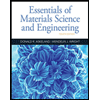 Essentials Of Materials Science And EngineeringEngineeringISBN:9781337385497Author:WRIGHT, Wendelin J.Publisher:Cengage,
Essentials Of Materials Science And EngineeringEngineeringISBN:9781337385497Author:WRIGHT, Wendelin J.Publisher:Cengage,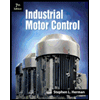 Industrial Motor ControlEngineeringISBN:9781133691808Author:Stephen HermanPublisher:Cengage Learning
Industrial Motor ControlEngineeringISBN:9781133691808Author:Stephen HermanPublisher:Cengage Learning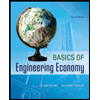 Basics Of Engineering EconomyEngineeringISBN:9780073376356Author:Leland Blank, Anthony TarquinPublisher:MCGRAW-HILL HIGHER EDUCATION
Basics Of Engineering EconomyEngineeringISBN:9780073376356Author:Leland Blank, Anthony TarquinPublisher:MCGRAW-HILL HIGHER EDUCATION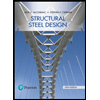 Structural Steel Design (6th Edition)EngineeringISBN:9780134589657Author:Jack C. McCormac, Stephen F. CsernakPublisher:PEARSON
Structural Steel Design (6th Edition)EngineeringISBN:9780134589657Author:Jack C. McCormac, Stephen F. CsernakPublisher:PEARSON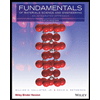 Fundamentals of Materials Science and Engineering...EngineeringISBN:9781119175483Author:William D. Callister Jr., David G. RethwischPublisher:WILEY
Fundamentals of Materials Science and Engineering...EngineeringISBN:9781119175483Author:William D. Callister Jr., David G. RethwischPublisher:WILEY

MATLAB: An Introduction with Applications
Engineering
ISBN:9781119256830
Author:Amos Gilat
Publisher:John Wiley & Sons Inc

Essentials Of Materials Science And Engineering
Engineering
ISBN:9781337385497
Author:WRIGHT, Wendelin J.
Publisher:Cengage,

Industrial Motor Control
Engineering
ISBN:9781133691808
Author:Stephen Herman
Publisher:Cengage Learning

Basics Of Engineering Economy
Engineering
ISBN:9780073376356
Author:Leland Blank, Anthony Tarquin
Publisher:MCGRAW-HILL HIGHER EDUCATION

Structural Steel Design (6th Edition)
Engineering
ISBN:9780134589657
Author:Jack C. McCormac, Stephen F. Csernak
Publisher:PEARSON

Fundamentals of Materials Science and Engineering...
Engineering
ISBN:9781119175483
Author:William D. Callister Jr., David G. Rethwisch
Publisher:WILEY